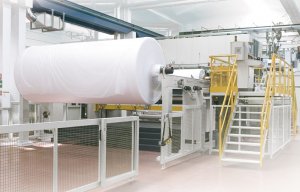
Oerlikon presents partnerships at IDEA 2019
A new spinning concept is said to make it possible to transform sensitive polymers into bicomponent filament yarns in the area of filament yarns.

19th November 2015
Innovation in Textiles
|
Remscheid/Milan
Oerlikon Manmade Fibers segment, a market leader for manmade fibre filament spinning systems, texturing machines, BCF systems and staple fibre systems, presents a new spinning concept for sensitive bicomponent filament yarns at ITMA that is due to conclude in Milan later today.
A new spinning concept is said to make it possible to transform sensitive polymers into bicomponent filament yarns in the area of filament yarns. The new technology is based on a temperature separation of the two polymers that feed into the Bico yarn.
Depending on the application, polymers are processed at great temperature differences to be able to guarantee the produced yarn's good spinnability and high quality. The new SP8xB dual temperature spin beam concept ensures the strict temperature separation between polymer type A and polymer type B. With that, the polymers' quality and viscosity can be adjusted to match the exact process requirements, the company reports.

The strict separation of the HTM-heating of both polymer supplies, as well as the spinning pump, is said to ensure the least possible damage to each type of polymer up to just before the point where both components are combined in the spin pack. This in turn is designed to guarantee optimal spinning conditions, according to the manufacturer.
The new system is based on the SP8xB spin beam concept and is said to offer the same energy advantages over the rectangular concept. Less sensitive polymers can also be manufactured with the standard SP8xB bico spinning unit without problems.
Over the past few months there has been a clear trend towards rising demand for Bico yarns. One reason for this development, the company believes, is that the market for commodity yarns is currently considered saturated and many yarn manufacturers are searching for niche markets. Moreover, new applications and treatment possibilities have been developed in the further processing of yarns.

Bicomponent yarns are said to offer a huge range of possible cross-sections. In general, these yarns comprise two different polymers, which give them specific properties. Bicomponent yarns with the corresponding cross-sections are manufactured depending on the desired application. Here, the four best-known cross-sections are core sheath, side by side.

Business intelligence for the fibre, textiles and apparel industries: technologies, innovations, markets, investments, trade policy, sourcing, strategy...
Find out more